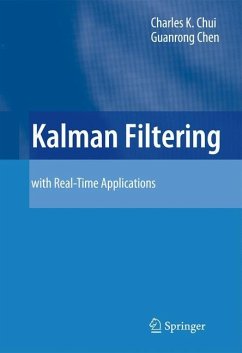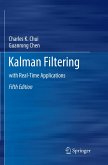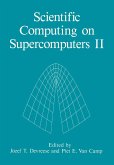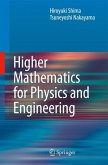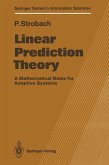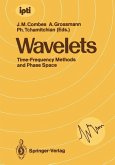"Kalman Filtering with Real-Time Applications" presents a thorough discussion of the mathematical theory and computational schemes of Kalman filtering. The filtering algorithms are derived via different approaches, including a direct method consisting of a series of elementary steps, and an indirect method based on innovation projection. Other topics include Kalman filtering for systems with correlated noise or colored noise, limiting Kalman filtering for time-invariant systems, extended Kalman filtering for nonlinear systems, interval Kalman filtering for uncertain systems, and wavelet Kalman filtering for multiresolution analysis of random signals. The last two topics are new additions to this third edition. Most filtering algorithms are illustrated by using simplified radar tracking examples. The style of the book is informal, and the mathematics is elementary but rigorous. The text is self-contained, suitable for self-study, and accessible to all readers with a minimum knowledge. Kalman Filtering with Real-Time Applications presents a thorough discussion of the mathematical theory and computational schemes of Kalman filtering. The filtering algorithms are derived via different approaches, including a direct method consisting of a series of elementary steps, and an indirect method based on innovation projection. Other topics include Kalman filtering for systems with correlated noise or colored noise, limiting Kalman filtering for time-invariant systems, extended Kalman filtering for nonlinear systems, interval Kalman filtering for uncertain systems, and wavelet Kalman filtering for multiresolution analysis of random signals. Most filtering algorithms are illustrated by using simplified radar tracking examples. The style of the book is informal, and the mathematics is elementary but rigorous. The text is self-contained, suitable for self-study, and accessible to all readers with a minimum knowledge of linear algebra, probability theory, and system engineering.
From the reviews: "To summarize, the authors have succeeded in bringing together the mathematical theory and the needs of practitioners. The newly added chapters, in particular the one on wavelets, give the book a proper finish. For a book of this size, it leaves little to be desired. It presents a wealth of details while at the same time avoiding unnecessary abstraction." (Andreas Ruppin, Berlin, Germany (SSN Stat. Software News, 2000, 34,3-4) "A rigorous and concise introduction to Kalman filtering is presented in this well-written book. It is suitable for graduate studies, as well as refresher courses and self-study. ... One of the strong features of the book is that Kalman filtering is presented from a few different viewpoints. ... The many end-of-chapters exercises--and the section at the end of the book with solutions and hints to several of them--are another strong feature of the book." (Vladimir Botchev, ACM Computing Reviews, July, 2009)

